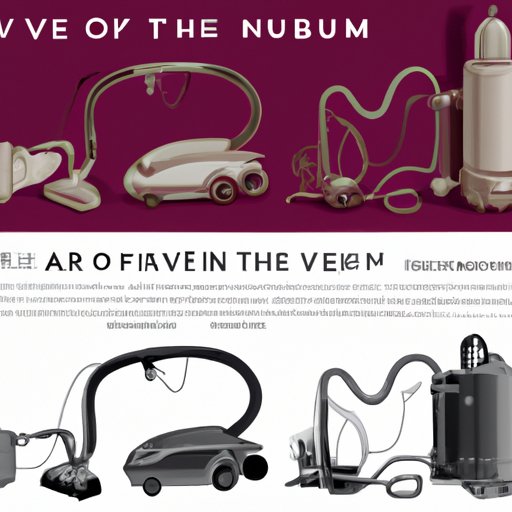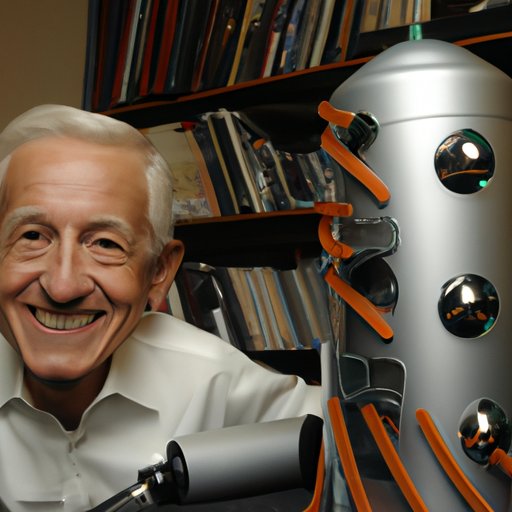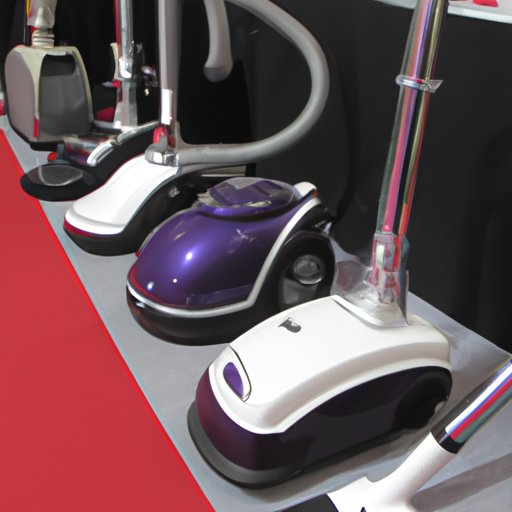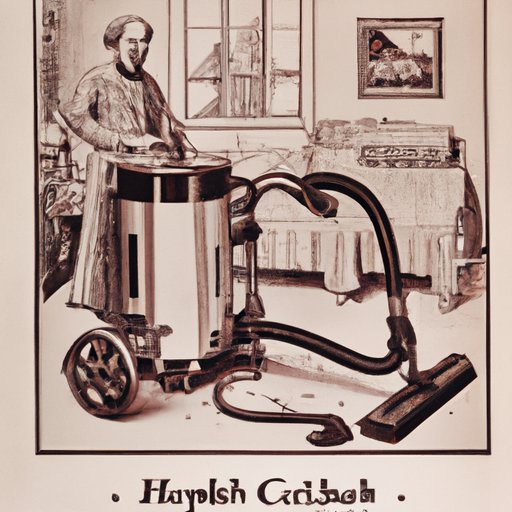Introduction
The vacuum cleaner is an essential household appliance that has become a part of everyday life. But who invented the vacuum cleaner and how has it evolved over time? This article takes a look at the history of the vacuum cleaner, from its invention in 1901 to its modern uses today.

A Historical Timeline of the Vacuum Cleaner: Who Invented It and How It Has Evolved
The first patent for a carpet sweeper was issued in 1860 to Canadian inventor Daniel Hess. However, it wasn’t until 1901 when the first motor-powered vacuum cleaner was invented by British engineer Hubert Cecil Booth. His invention revolutionized the way people cleaned their homes and businesses.
In 1905, American janitor James Murray Spangler created the first portable electric vacuum cleaner. His design used a fan, motor, and cloth bag to capture dust. Spangler sold the patent to William Henry Hoover, who then developed a more efficient version of the vacuum cleaner and began mass-producing them in 1908.
Over the decades, the vacuum cleaner has undergone many improvements and advancements. In the 1930s, the first upright vacuum cleaners were developed and they quickly became popular. Today, there are many different types of vacuum cleaners available on the market, including canister, cordless, robotic, and handheld models.

The Innovator Behind the Vacuum Cleaner: A Profile of the Inventor and His Creation
Hubert Cecil Booth was born in England in 1871 and worked as an engineer and inventor. He had a passion for finding ways to make tedious tasks easier and more efficient. In 1901, he developed the world’s first motor-powered vacuum cleaner, which he called the “Puffing Billy”.
Booth’s invention was based on the principle of using suction to clean carpets. His vacuum cleaner consisted of a large box-like structure with an internal combustion engine that powered a fan. The fan created powerful suction and sucked up dirt and debris from the floor. Booth’s invention was a huge success and revolutionized the way people cleaned their homes and businesses.
A Closer Look at the Vacuum Cleaner: Examining Its Design and Functionality
Today, modern vacuum cleaners are equipped with a wide range of features and attachments. The basic components of a vacuum cleaner include a motor, fan, filter, hose, and collection bag or cup. The motor powers the fan, which creates suction. The filter captures dust and other particles, while the hose allows users to access hard-to-reach areas.
Vacuum cleaners come in a variety of sizes and designs, and they have different types of suction power. Upright vacuums are designed for larger spaces, while handheld vacuums are perfect for smaller areas. There are also a variety of attachments that can be used for different cleaning tasks, such as crevice tools, brushes, and upholstery nozzles.

An Overview of Early Vacuum Cleaners: How They Differ from Modern Models
Early vacuum cleaners were much different from modern models. They were heavy and cumbersome and often needed to be pushed around the house. They also lacked the suction power and efficiency of modern models. Additionally, early models did not have any attachments or specialized features, making them less effective for certain cleaning tasks.
Modern vacuum cleaners, on the other hand, are lightweight and much more powerful. They also have a variety of attachments and features that make them more versatile and effective. Additionally, modern models are more energy-efficient, which helps to reduce electricity costs.
The Impact of the Vacuum Cleaner: Analyzing Its Influence on Households and Businesses
The invention of the vacuum cleaner has had a tremendous impact on households and businesses. For households, having a reliable vacuum cleaner makes it easier to keep floors and carpets clean. In addition, it eliminates the need for manual labor and reduces the amount of time spent cleaning. For businesses, the vacuum cleaner makes it possible to keep offices and other public spaces clean and presentable.
The vacuum cleaner also has a positive environmental impact. By reducing the amount of time and energy spent cleaning, it helps to conserve resources and reduce pollution. Additionally, some vacuum cleaners are designed with energy-efficient features that help to reduce electricity consumption.
Conclusion
The vacuum cleaner has come a long way since it was first invented in 1901. Hubert Cecil Booth’s invention revolutionized the way people cleaned their homes and businesses and has had a lasting impact on both households and businesses. Today, the vacuum cleaner is an essential appliance that is used around the world. It is a testament to the power of innovation and the importance of finding new and better ways to make our lives easier.
From its inception to its evolution over the decades, the vacuum cleaner has been an invaluable tool in keeping our homes and businesses clean. It has made difficult tasks easier and more efficient, and its environmental benefits cannot be overlooked. As we look to the future, the vacuum cleaner will continue to play an important role in keeping our world clean and healthy.
(Note: Is this article not meeting your expectations? Do you have knowledge or insights to share? Unlock new opportunities and expand your reach by joining our authors team. Click Registration to join us and share your expertise with our readers.)
